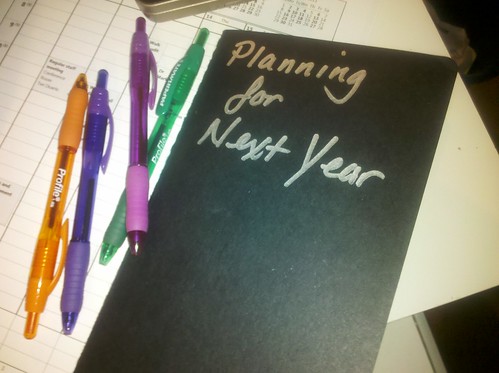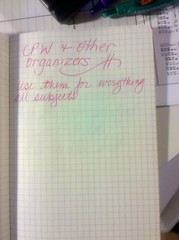Week in Lab: Planning for 2011-12

I’ll get to a regular week in lab post, I promise, but I’ve been trying to do some thinking time about the next school year. I do that about this time each year as I try to work out what I need to do more, do better, and try that is new. The next school year has a particular wrinkle in that I’ll be leaving working in the lab as a school resource, and going back to a self-contained classroom. I’ve done this before, but that was 4 years ago, and even though it’s different I have learned some things since then. I’m going to try to share some key ideas as they come up. This week’s ideas are featured because they have ties to some of recent posts from Larry Ferlazzo.

Mind Maps and Organizers
When I was last in the classroom, I used organizers of various sorts a lot with the kids. I use mind maps like Inspiration (we have a district license making it free for me to use), and more linear note taking grids created in MSWord. Not having a one-to-one classroom, I would print these to get student responses, and then combine those various ways into a class one typed up online.
The thing that got me thinking was a really great post called, What Is The “Zeigarnik Effect” & How Did I Apply It In The Classroom Today?, and how one of the organizers I used to use had some of the elements that Larry writes about as helpful in getting reluctant kids to get started on a task. The idea is basically that if you get kids started on the task, the tendency is to finish it, so if you give them something they can do easily, then ratchet up the difficulty, they will already be started and are more likely to keep going.
Here is the organizer, I used to use. It’s from Open Court (and for those OCR skeptics I’m one myself, but even a broken analog clock tells the right time twice a day). I used to use this when we were preparing to read a text, and at that time used it just for Language Arts. The kids were supposed to go through and look for “clues” about what they would be reading, problems they could already see just skimming the story, and wonderings, or questions they had about the story. It’s basically a different way of doing a KWL chart.
You’ll notice that I required they provide three clues. Two of them were EASY. The kids learned that they could look up the “genre” in the table of contents of the anthology, and the title, is well, the title. The third would require a little more work, but because they knew how to get the those other two, they did that first automatically, and having that under their belt tended to finish the rest of the task.




